Animal Foods of the Ngadjonji

Animals foods of the Ngadjon this page
see also on separate pages...
Plant Food
Eels
Food Processing
for
a complete listing of Ngadjon food names visit the Ngadjon Language
Resource page...
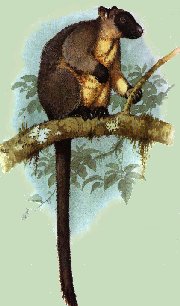 mapi - Tree Kangaroo
mapi - Tree Kangaroo  bungaa - Possum
bungaa - Possum 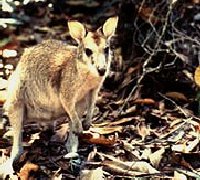 gupa -
Pademelon
gupa -
Pademelon  munggarra - Scrub Turkey
munggarra - Scrub Turkeymapi and durrgim © W T Cooper 1993
jambun Photo - Helen Pedley
Other wildlife photos - Tony Irvine
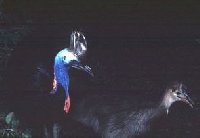 gumbulgan -
Cassowary
gumbulgan -
Cassowary 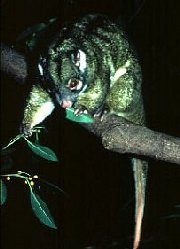 wundajilla - Green Possum
wundajilla - Green Possum 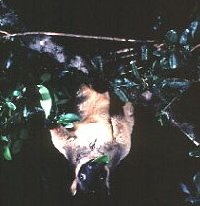 gugi - Flying Fox
gugi - Flying Fox  bajiri -
Dragon
bajiri -
Dragon 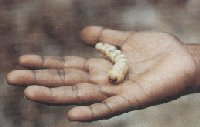 jambun - Witchetty Grub
jambun - Witchetty Grub The Ngadjonji hunted and trapped the animals, birds and fish that shared their rainforest world. These animal foods, together with the wide variety of plant foods that they obtained from the forest (see Plant Use Table and Food Processing), ensured a well-balanced and nutritious diet.
Larger animals and birds, which were active in the daytime or at dusk and dawn, such as pademelons (gupa) and other wallabies or cassowaries (gumbulgan) could be speared. Many of the smaller rainforest animals such as the possums (bungaa, nuta, wundajilla), flying-foxes (gugi) and the white-tailed rat (durrgim) are only active at night when the Ngadjonji did little hunting. They often used their spectacular tree-climbing skills (see Tree-climbing) to catch these animals in their day-time resting places high in the treetops. Tree-climbing was also necessary to obtain the much-prized honey and honeycomb of mayi, the native bee.
As well as cassowaries, other birds such as scrub hens (jarragan) and especially scrub turkeys (munggarra) and their eggs (bambu) were important food for the Ngadjonji. The feathers could be used as a body decoration for corroborees. The Ngadjonji constructed large turkey-traps (jimama) out of woven lawyercane and enticed the birds into the traps by laying trails of food. (See Animal Traps)
Reptiles which were a welcome part of the diet included large snakes such as the carpet snake (garpu) and rock python (gundaya), lizards (bajiri), and, from the river, fresh-water turtles (bangarru).
Also from the water came fish such as jewfish (ganyu) and eels (japun). Eels were particularly sought after and could be speared in shallow water or caught in long traps made from woven lawyercane (see Eels).
Another popular food item was the large and highly nutritious witchetty grub (jambun)) obtained from the wood of dead trees.
All these animals (except witchetty grubs which could be eaten raw) were cooked before eating. This cooking could be in a ground oven (for large pieces of meat), in the coals of a fire (most of the smaller animals, fish and birds) or on a spit or frame of green saplings above a fire (especially snakes and eels). (See Fire)
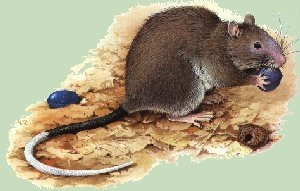
durrgim (White-tailed Rat) eating didaja (fruit of the Atherton Oak)

